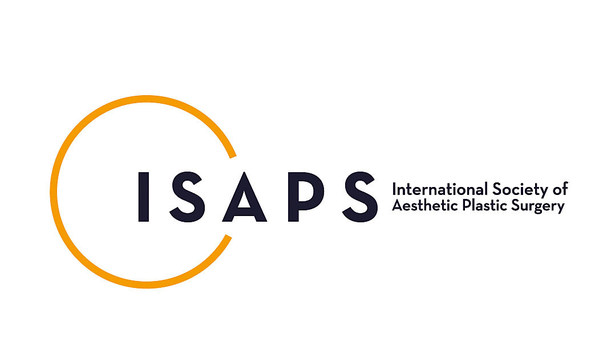 |
COVID-19 practice closures lead to a 10.9% decrease in surgical procedures
WEST LEBANON, N.H., Dec. 28, 2021 /PRNewswire/ -- The International Society of Aesthetic Plastic Surgery (ISAPS) released the results of its annual Global Survey on Aesthetic/Cosmetic Procedures today, which showcased the impact of the COVID-19 pandemic on aesthetic plastic surgery procedures worldwide throughout 2020.
Highlights
Plastic surgery procedures for aesthetic purposes decreased by 10.9% overall in 2020, with 77.8% of surgeons globally experiencing temporary practice closures during the COVID-19 pandemic. Nonsurgical procedures (primarily fillers and hair removal treatments) continued to increase, but by lower proportions than seen in previous years (5.7% in 2020, compared to 7.6% in 2019). This resulted in an overall decrease of 1.8% for all procedures.
Dr. Arturo Ramirez-Montañana, Chair of ISAPS' Global Survey Committee said, "This downward trend is in line with our survey findings of lower patient demand due to safety and financial concerns during the COVID-19 pandemic. At the same time, many of us have also experienced an increase in demand due to patients' increased flexibility, the opportunity for a more private recovery and, particularly for facial procedures, the so-called 'zoom effect'. This has limited the impact of COVID-19 on overall procedures."
Aesthetic Procedures
The most common surgical procedures worldwide remained the same during 2020, with breast augmentation making up 16% of all procedures, liposuction 15.1%, eyelid surgery 12.1%, rhinoplasty 8.4% and abdominoplasty 7.6%.
The top five nonsurgical procedures also remained consistent: botulinum toxin (43.2% of all nonsurgical procedures), hyaluronic acid (28.1%), hair removal (12.8%), nonsurgical fat reduction (3.9%) and photo rejuvenation (3.6%). Around 85% of nonsurgical procedures were performed on women.
In spite of the overall reduction in surgeries, rhinoplasty and brow lift surgeries continued to increase, and nonsurgical facial rejuvenation showed a 13.9% increase compared to a decrease in both 2019 and 2018.
Overall, nonsurgical procedures increased, except for botulinum toxin, hyaluronic acid, and micro-ablative resurfacing (decreasing by 0.9%, 6.1% and 11.3%, respectively).
The most common surgical procedures in men continue to be eyelid surgery, liposuction, gynecomastia, rhinoplasty and ear surgery.
Looking at the age distribution for different procedures, 19-34-year-olds made up the highest proportion of those undergoing rhinoplasty (67.9%) while 35-50-year-olds accounted for the majority of botulinum toxin procedures (50.2%).
At the time of this survey, only 45% of surgeons had seen a return to pre-pandemic patient volume. Dr. Ramirez-Montañana said, "Despite the terrible pandemic we are living through, it seems that most aesthetic plastic surgeons are getting back to near-normal practice and I am optimistic about 2021, both for the plastic surgery industry and for surgical and nonsurgical procedures."
Country Statistics
The USA saw an increase in both surgical and nonsurgical procedures, consolidating its position as the number one country for surgical procedures performed worldwide (14.7% of total surgical procedures) and taking the lead from Brazil with most nonsurgical procedures performed worldwide (22.1% of total nonsurgical procedures).
The top 10 countries for procedures in 2020 were the USA, Brazil, Germany, Japan, Turkey, Mexico, Argentina, Italy, Russia, and India, followed by Spain, Greece, Colombia and Thailand.
Mexico, Turkey, and Colombia saw the highest proportion of foreign patients: 28.2%, 25.8% and 21.8%, respectively in 2020. Thailand, which held the number one position last year, was fourth highest at 20.9%.
Hospitals continue to be the primary facility where surgical procedures are performed (43.8% worldwide), apart from the USA where office facilities (45% of procedures) and free-standing surgical centers (34.3%) are more commonly used.
Survey Methodology
Survey participants completed a questionnaire that primarily focused on the number of specific surgical and nonsurgical procedures performed in 2020, along with some ancillary questions related to the impact of COVID-19, surgeon demographics and the prevalence of medical tourism. This questionnaire was sent to approximately 25,000 plastic surgeons in ISAPS' database. Data from a total of 1,081 plastic surgeons were compiled for this survey. The results were compiled, tabulated and analyzed by Industry Insights, an independent research firm based in Columbus, OH. ISAPS is the only organization to collect this type of cosmetic data annually on a global scale. For a copy of full results, please visit https://www.isaps.org/medical-professionals/isaps-global-statistics/.
About ISAPS – The International Society of Aesthetic Plastic Surgery (ISAPS) is the world's leading professional body for board-certified aesthetic plastic surgeons. Founded in 1970, ISAPS provides an open forum for the exchange of aesthetic plastic surgery knowledge worldwide. ISAPS sponsors and endorses scientific meetings throughout the world, and offers its members up-to-date training and continuing education. Today, ISAPS membership includes over 5,100 of the world's most respected aesthetic and reconstructive surgeons in 110 countries. Patients looking for an aesthetic plastic surgeon can use our Find a Surgeon feature to find a qualified and experienced surgeon with a demonstrated commitment to ethical practice and patient safety.